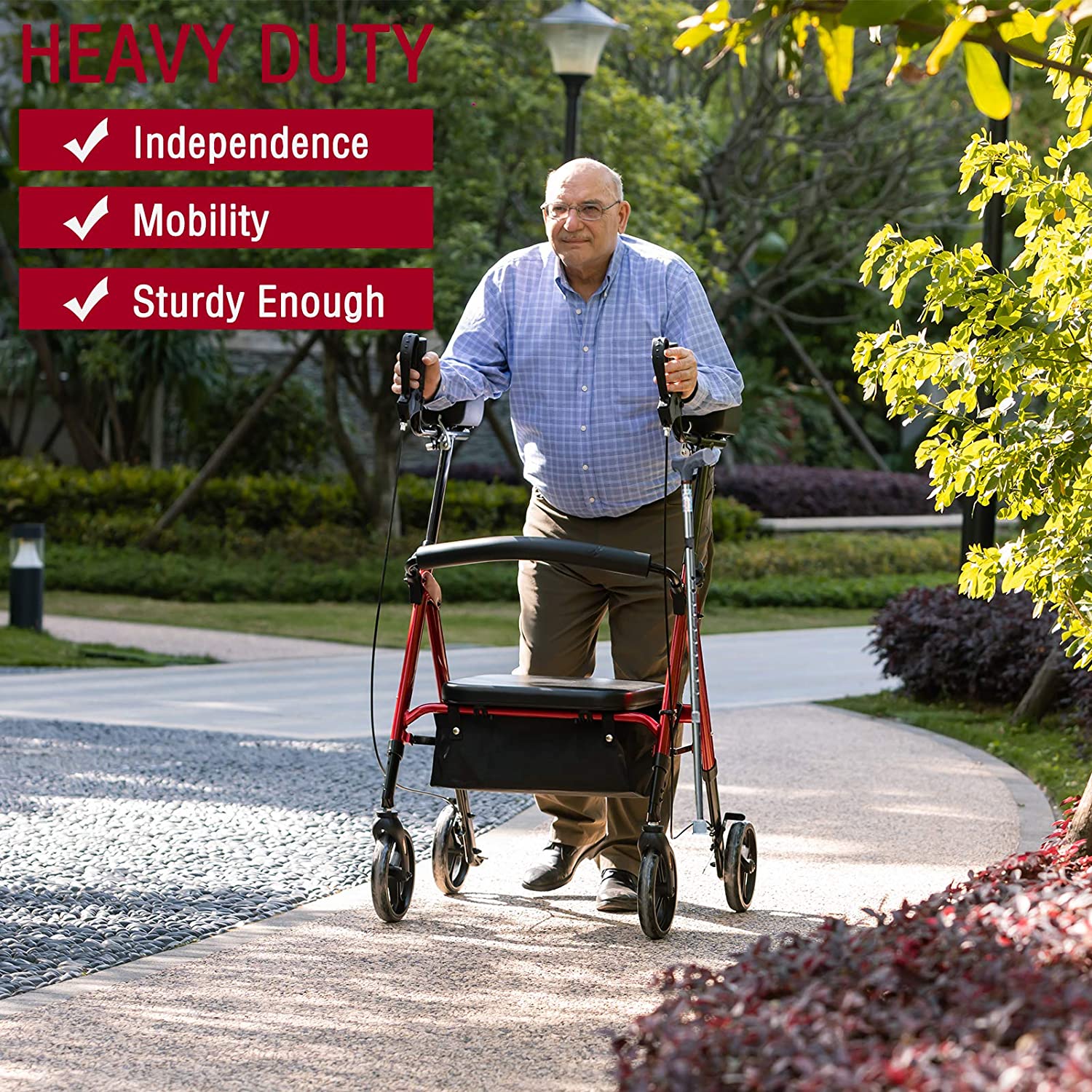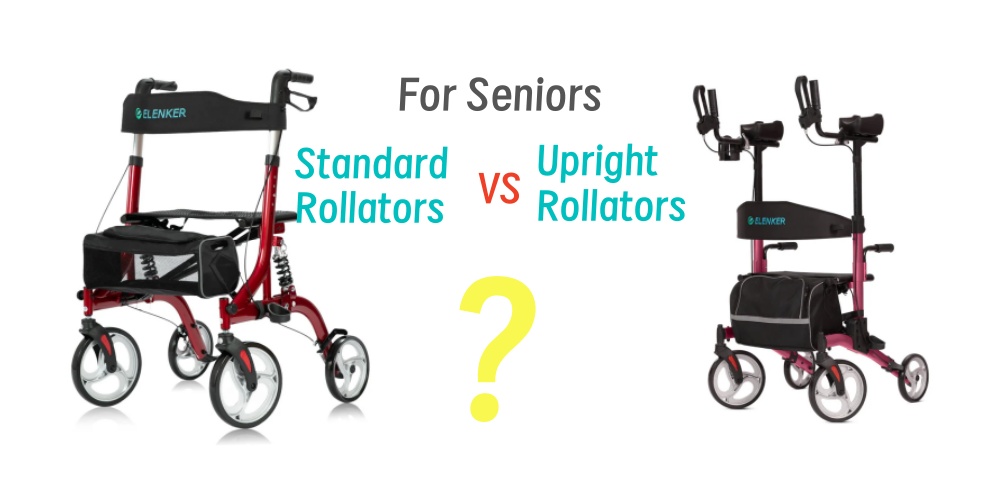
If you’ve ever hunched over a traditional walker and ended up with a sore back or tight shoulders, you’re definitely not alone. A lot of people—especially seniors or anyone recovering from surgery or injury—rely on mobility aids every day. And while they do help you move around, not all of them are the best when it comes to posture and back support.
Enter the upright rollator walker—one of the newer designs in the mobility world that’s been getting a lot of attention lately. But is it really better for your posture and back? Let’s chat about it in plain terms and break it all down.
So, What’s an Upright Rollator Walker Anyway?
You might’ve seen someone using one and thought, “Hey, that walker looks different.” That’s because it is! A walker upright rollator, also called a stand up rollator walker or a rollator stand up walker, is designed so that the handles are higher up, usually at forearm or elbow height. That means instead of leaning forward and pushing from waist-level handles like with a traditional rollator, you’re walking more upright and naturally.
And here’s the key thing—upright rollator walkers encourage better posture by design. That alone can make a big difference in how your back and shoulders feel at the end of the day.
Why It’s Better for Your Posture
Let’s be real: a lot of folks using traditional walkers or rollators end up hunched over, whether they mean to or not. That constant leaning forward can strain your lower back, neck, and even your wrists over time. If you’ve got arthritis or any kind of back issues, that’s not doing you any favors.
With an upright rollator walker, the idea is to keep your spine in a more natural, neutral position. You’re standing taller, looking forward instead of down, and your arms rest comfortably on the higher forearm supports or ergonomic handles.
It’s kind of like the difference between slouching at a desk versus sitting up straight in an ergonomic chair—your body just feels better when it’s properly aligned.
What About Back Support?
Posture is one thing, but let’s talk about actual back support. While no walker is a substitute for physical therapy or medical care, using a stand up rollator walker can reduce the amount of pressure you’re putting on your back just by improving how you carry yourself.
Some models, like the Elenker upright rollator walker, even come with padded armrests and adjustable features so you can really fine-tune your setup to match your height and walking style. That kind of customization helps take pressure off your spine and encourages you to stay upright rather than slumping forward.
Plus, walking more naturally means your core muscles can stay engaged, which is great for long-term strength and support.
Don’t Forget the Seat!
One thing folks love about a upright rollator walker with seat is, well, the seat! If you’re out and about—grocery shopping, walking through the park, or just waiting in line—it’s super handy to have a place to sit and rest.
Having a seat built into your walker upright rollator means you don’t have to worry about finding a bench or dragging a chair around. That can take some stress off your legs, hips, and of course, your lower back.
Is It Right for You?
Not everyone needs a rollator stand up walker, but if you’re someone who:
- Struggles with back pain or neck tension
- Feels hunched or off-balance using a standard walker
- Wants better visibility while walking
- Needs more ergonomic hand and arm positioning
- Likes having a built-in seat and storage pouch
…then it might be worth trying one out.
The Elenker upright rollator walker, for example, is a popular choice because it’s relatively lightweight, folds up for transport, and is adjustable for different heights. Plus, it looks a little sleeker than your average walker, which is a nice bonus.
A Few Things to Keep in Mind
While upright rollator walkers offer a ton of benefits, they might not be for everyone. If you have limited shoulder mobility, for instance, resting your forearms on higher supports might feel awkward at first. And if balance is a big concern, make sure you get one with stable wheels and good brakes.
Also, they do tend to be a bit bulkier than traditional walkers, so you’ll want to check if it fits easily through your doorways or in your car.
Using an upright rollator walker is all about helping you feel better, move easier, and stay independent. If you’ve been dealing with back pain, stiffness, or just don’t like the way you feel after using a standard walker, switching to a stand up rollator walker could be a solid move.
And with features like seats, adjustable arms, and better ergonomic support, you might find it’s a lot more comfortable—and confidence-boosting—than what you’re used to.

